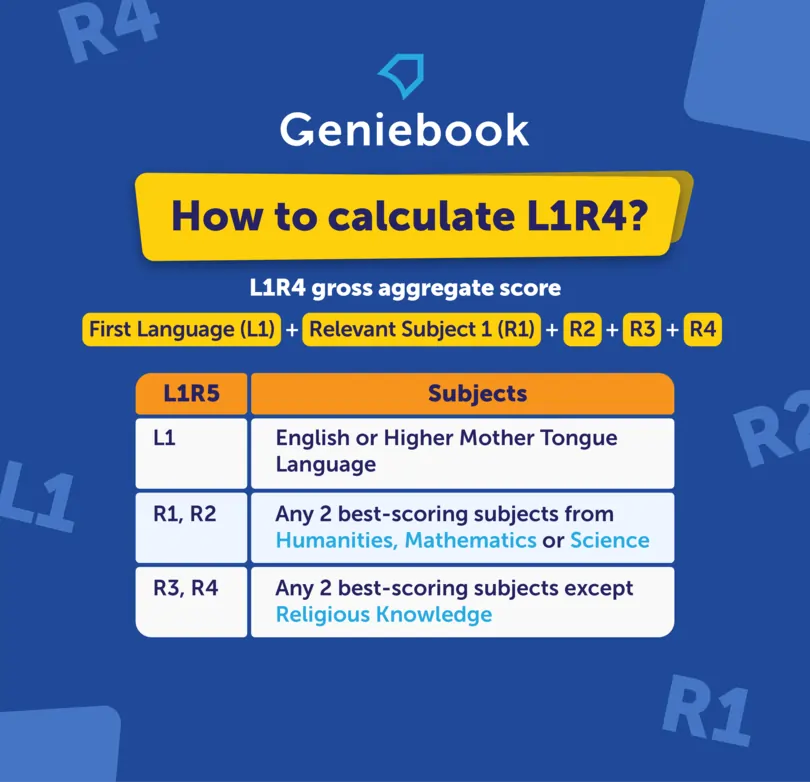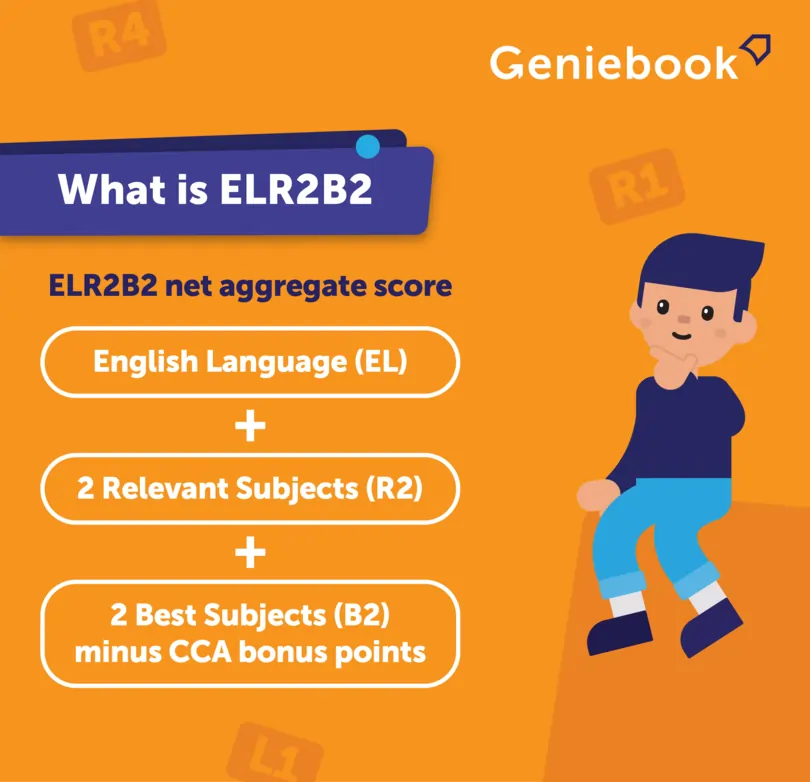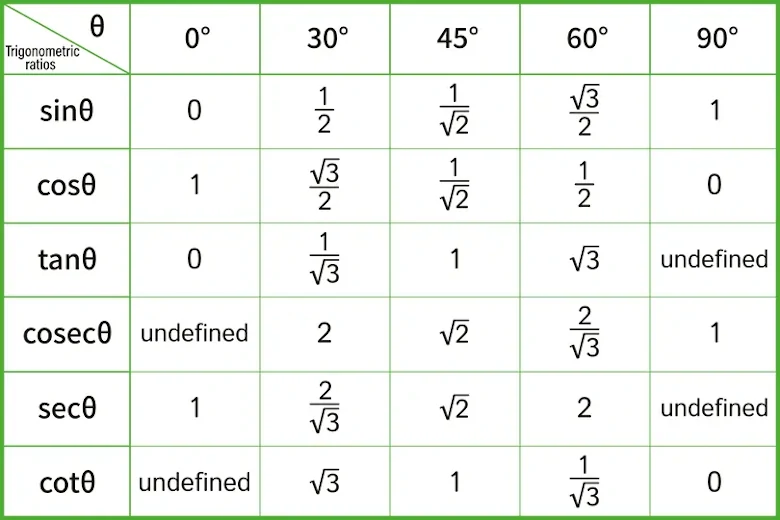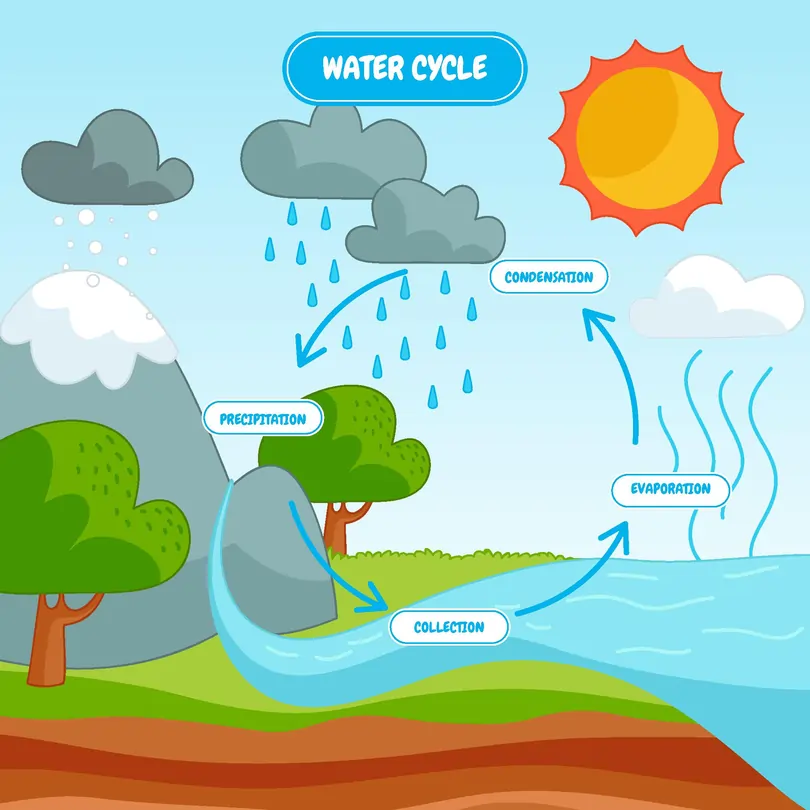GCE O-Level 2025 Scoring System
Upon receiving the results of the O Level examination, students can apply to a Polytechnic or Junior College of their choice via the Joint Admissions Exercise (JAE). The scoring system and requirements will differ depending on where your child is planning to apply.
Junior College (JC) admission criteria
If your child intends to apply to a Junior College, their admission depends on their L1R5 scores.
What is the L1R5 system?
Essentially, the L1R5 stands for:
- L1: 1 Language Subject
- R5: 5 other Relevant Subjects

The L1R5 considers the grade for the student's first language (L1), which in most cases would be English. Students who do well in their Higher Mother Tongue may also use it as their L1 subject. However, note that Mother Tongue at the ordinary level cannot be considered in their L1 score - it can be regarded as part of the R5 subjects instead.
In addition, scores from your best five other subjects (R5) will also be added to this computation. Out of the five best subjects, it must include one maths or science subject, and one humanities subject.
What cannot be used for aggregate computation?
- You cannot use the grades of Higher Mother Tongue Language and Mother Tongue Language in the same aggregate computation. For example, if Higher Chinese is used as the first language (L1), Chinese cannot be used as a relevant subject (R1 to R5).
- "Merit" and "Pass" grades for the Mother Tongue 'B' Syllabus cannot be used for aggregate computation.
Once you are familiar with what the L1R5 stands for, it is easy to calculate the aggregate score. For each subject, a grade is given, ranging from A1 to F9. Calculating an aggregate score simply means adding all the numbers.
Here is an example of how to calculate your child’s L1R5 score:
John‘s Grades
English: A1
Mother Tongue Language: B3
Mathematics: A2
Literature: B4
Physics: B3
Geography: A2
Total L1R5 Score
= 1+3+2+4+3+2
= 15
There are several requirements that your child has to meet to qualify for a Junior College:
- L1R5 score must not exceed 20
- Students must meet the following subject-specific grade requirements:
|
Subject |
Grade |
|
English |
1-6 |
|
E. Maths / A. Maths |
1-7 |
|
Any 1 Mother Tongue Language (MTL) |
- MTL - 1-7 |
By now, you would have realised that the lower the score, the better it is. Besides subject grades, bonus points can be deducted from the overall L1R5 score, should your child fulfil the requirements. With these bonus points deducted, your child can get an even better score that brings them closer to their desired choice of school!
Refer to the table below for the following requirements:
|
Requirement |
Maximum no. of points deducted |
|
CCA grade of A1 or A2 |
2 points |
CCA grade of B3 to C6 |
1 point |
|
At least a C6 grade for Higher Mother Tongue |
2 points |
|
An A1 to C6 grade for Chinese or Malay Special Programmes |
2 points |
Students in a special language elective programme are also eligible for an additional 2 points deduction. Note that only a maximum of 4 points can be deducted from these bonus conditions. |
|
Suppose that John excelled in his CCA with an A1 grade, and achieved a B4 for his Higher MTL. As he has met the criteria of (1) and (3), he is eligible to deduct a total of 4 points from his L1R5.
Based on the previous example, John achieved 15 points based on his 1 Language (L1) and Best 5 Subjects (R5). With the bonus points, John’s final L1R5 score would be 15 - 4 = 11.
This final L1R5 score of 11 would then be taken into consideration when applying for the Junior College of his choice in the Joint Admissions Exercise.
Millennia Institute (MI) admission criteria
What is L1R4?
- L1: Language Subject
- R4: 4 other Relevant Subjects

In this calculation, certain criteria cannot be combined:
- Students cannot use grades from the same Higher Mother Tongue Language and Mother Tongue Language simultaneously. For instance, if Higher Chinese is selected as the first language (L1), Chinese cannot be considered as a relevant subject (R1 to R4).
- 'Merit' and 'Pass' grades for the Mother Tongue 'B' Syllabus cannot be added to calculate the L1R4.
Polytechnic admission criteria
What is the ELR2B2 system?
The ELR2B2 considers the following:
- EL: English Language
- R2: 2 Relevant Subjects
- B2: 2 other Best Scoring subjects

Here is an example of how to calculate your ELR2B2 score.
John‘s Grades
English: A2
Mother Tongue Language: B4
Mathematics: C6
Combined Science: A1
Food and Nutrition: B3
Total ELR2B2 Score
= 2+4+6+1+3
= 16
To be eligible for a Polytechnic admission, students must not have an ELR2B2 score that exceeds 26. The score for a Polytechnic admission applies to all courses except for a Diploma in Nursing, which requires candidates to have a score that does not exceed 28.
Depending on the course your child wishes to apply for, there might be specific course requirements for admission. Check out the latest course guidelines and admissions FAQ updated on the respective school websites to make an informed decision.
Institute of Technical Education (ITE)
ITE has become a practical and viable alternative route to post-secondary institutions. The ITE creates opportunities for graduates to upskill and progress in their career education.
Unlike a Junior College or Polytechnic where the admission requirements include an L1R5 or ELR2B2 score, admission to the Institute of Technical Education (ITE) takes into account if a student has passed at least 5 O Level subjects over a maximum of 2 years. In ITE, students can pursue either a Nitec or Higher Nitec course, depending on the students’ interests and aptitudes.
Nitec (National ITE Certificate)
In a Nitec course, students are equipped with industry-relevant skills needed to be successful professionals. Covering 6 industry sectors, the Nitec course welcomes students who eye various career paths in healthcare, engineering or business management.
Click here to find out more about the entry requirements into the full-time 2-year Nitec courses.
Higher Nitec
In 2022, the ITE introduced the new 3-year Higher Nitec full-time programme, which allows students to attain a Higher Nitec qualification directly in only three years. Previously, the ITE offered the two-year Nitec programmes and the Higher Nitec programmes, which are mostly two years, separately. As such, GCE N-Level holders who enter Nitec courses will typically achieve a Higher Nitec after four years.
According to the Institute’s website, O Level, Direct Entry Scheme to Polytechnic Programme (DPP) and Normal Academic students will join the new 3-year Higher Nitec programme directly in the second year. This then allows them to attain their Higher Nitec certification in 2 years.
The courses included in the programme are as follows:
- Higher Nitec in Accounting
- Higher Nitec in Sport Management
- Higher Nitec in AI Applications
- Higher Nitec in Business Information Systems
- Higher Nitec in Cyber & Network Security
- Higher Nitec in Data Engineering
- Higher Nitec in Electronics Engineering
- Higher Nitec in Immersive Applications & Game
- Higher Nitec in IT Systems & Networks
- Higher Nitec in IT Applications Development
- Higher Nitec in Security System Integration
Click here to find out more about the entry requirements for the full-time 3-year Higher Nitec courses.
As parents, it is vital to have a clear picture of the O Level scoring system to have a clear understanding of the decision-making process that comes after receiving the results. For students who have yet to take the O Level examinations, this information may prove useful in the future.
When it comes to exam preparation, Geniebook is ready to lend a helping hand by providing the right tools to aid your child’s education journey. In Geniebook, we utilise a patented A.I system that identifies the topics that your child is strong and weak in. With over 300,000 questions aligned to Singapore’s MOE syllabus, Geniebook’s personalised revision plan aims to strengthen foundations and accelerate improvement.


 SG
SG  VN
VN 


















